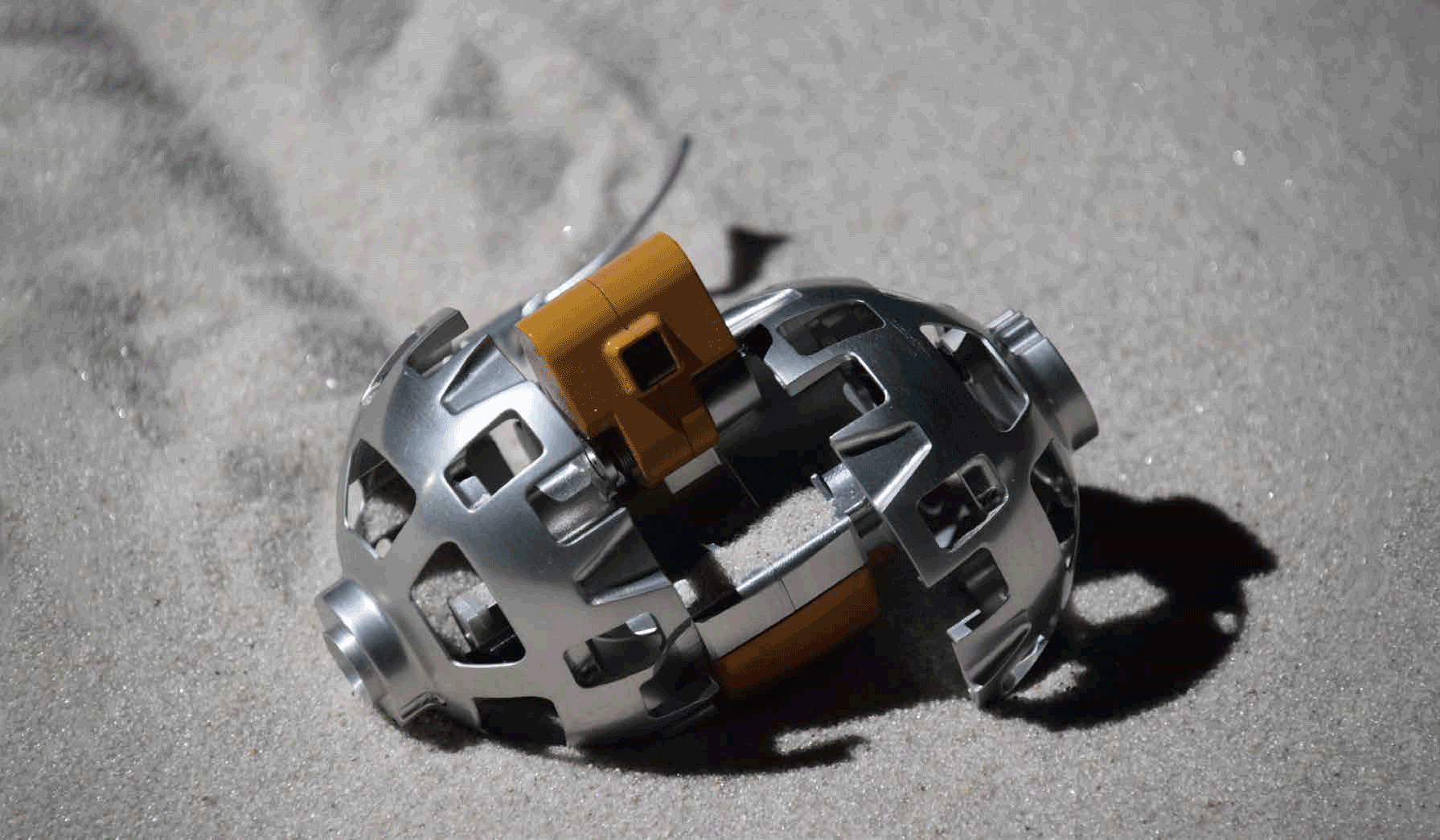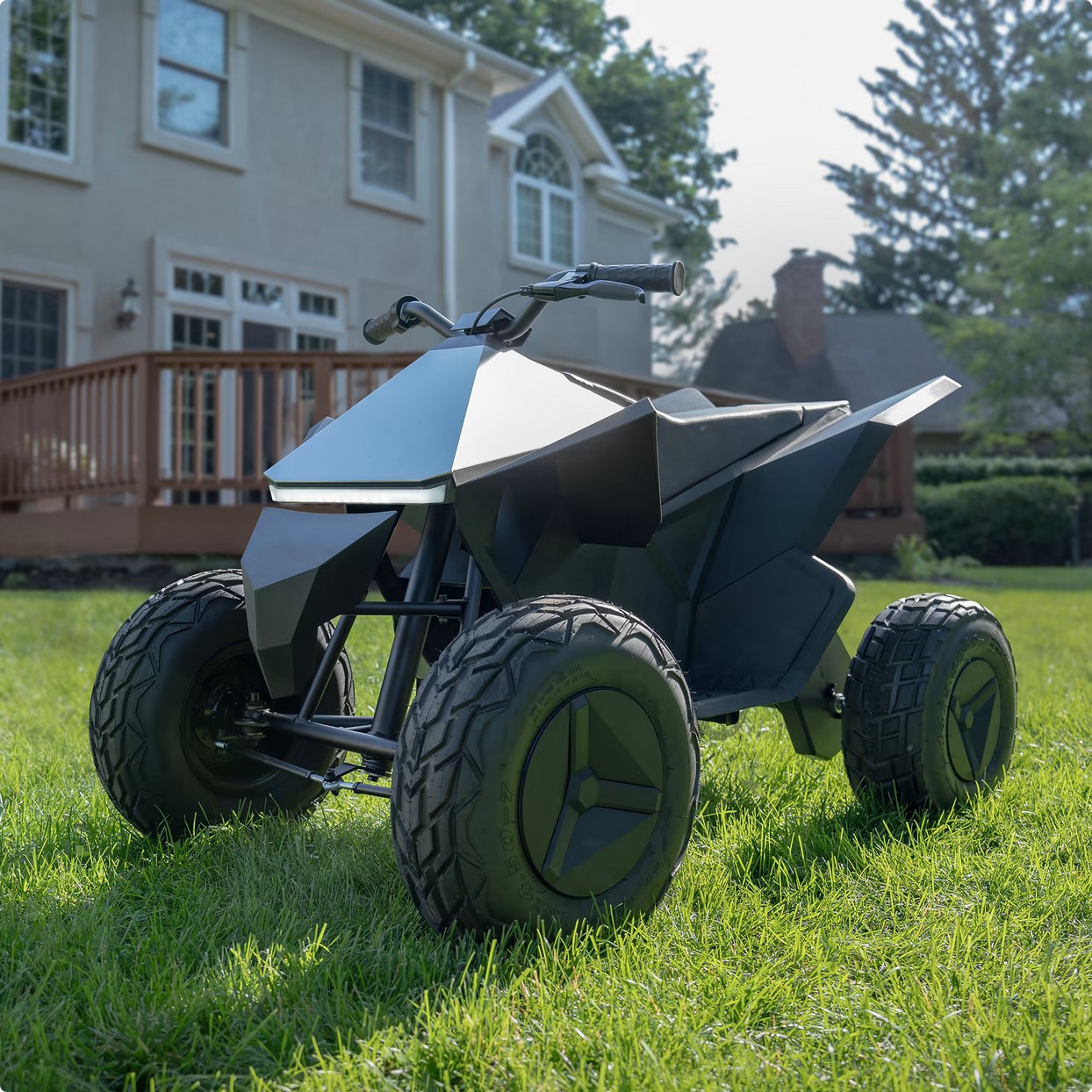-
Sand drawing robot
03/23/2024 at 01:10 • 0 commentsAlong the lines of the smallest possible RC toy
https://hackaday.io/project/162680/log/226525-smallest-possible-rc-toy
autonomous things
https://hackaday.io/project/162680/log/213989-autonomous-thing-which-travels-back-forth
Japan's lunar excursion vehicle
https://global.jaxa.jp/activity/pr/jaxas/no088/03.html
& a sand garden robot
Comes an idea for a portable sand drawing robot based on the lunar excursion vehicle.
![]()
It can certainly draw lines. The problem with this is doing a pen up. Maybe it needs a quad copter component. Maybe it can convert into a rolling ball.
-
Tethered gas balloon platform
03/01/2024 at 06:38 • 0 commentsA tethered balloon would make a good temporary observation point for rocket launches. If the tether breaks, you're in a tough spot though. It would need a deflation valve.
The practical version would be unmanned & have a high resolution camera. It would have 3-4 tethers to keep it reasonably stationary. It could capture sound without the noise of a quad copter.
Another idea is using the platform to launch gliders.
-
Smallest possible RC toy
01/06/2024 at 21:32 • 0 commentsThe lion kingdom discovered RC with a zip zap micro toy someone brought into the day job. It could almost go the length of a hallway on a charge, some 350ft based on a goog earth photo of the building. It was quite addictive to discover how far something that small could be made to go. Then came the even more addictive picco Z in 2006. The addiction to that was from achieving the most stable flight with the least controls.
Something about the micro toys seemed addictive in ways none of the larger vehicles were. It might have been trying to get the maximum ratio of range to size. Lions just outgrew the toy problem & transitioned to using RC parts to solve bigger problems after 2006. Then there was a home made toy that was self propelled but not RC.
The whole thing got lions pondering what the smallest possible RC thing would be. Below a certain size, wheels aren't practical & solenoid driven jumping becomes more practical. Habayusa 2 used hopping rovers. It takes lions back to the photovore craze. The minimum system would be a big solenoid actuator & a weight shift mechanism.
The free flight craze came along & revealed the minimum solenoid actuator. There was no practical linear actuator. 3D printing made these infinitely easier to make. There could be 2 rotating actuators forming a linear motion but it would be big.
Suspect the material that it travels on is just going to be limited by the size & it's just going to be 2 big solenoid plungers for motion, a battery, & a brain.
It's a pretty tough problem, since you're trying to create the most reaction force in the smallest space. Early biological machines used thousands of hairs.
https://www.newsdirectory3.com/japans-first-lunar-rover-to-be-sold-to-the-public/
This might be the smallest moving thing currently made.
It's got the full phone app, camera, collapsing ability but something that just drives around could be a couple pager motors. A good old commutator is still smaller than a solid state motor controller.
-
USB power delivery hack
12/17/2023 at 03:24 • 0 commentsThe lion kingdom has 2 USB power supplies capable of arbitrary voltages. For just 1 application, it's not economical to buy an off self power delivery chip when a dedicated power supply is the same price. It would be economical to make the application circuit negotiate the voltage on its own. So far, there are no open source implementations of the protocol.
The only search terms which work are "usb c power delivery breakout". Anything else causes the goog to spit out garbage.
What little information there is has people trying to reverse engineer it instead of bothering to decipher the spec. It seems to be a 1 megbaud RS232 signal on the CC wire. The high voltage is 1.2V. The 2 sides pull the wire low to communicate in both directions. The application circuit would always depend on its own voltage regulator & the configured USB voltage would be for powering a load. It wouldn't be capable of eliminating the voltage regulator.
Another guy got a bit farther with a $1300 Lecroy.
https://www.reclaimerlabs.com/blog/2017/5/16/example-usb-power-delivery
Lions noticed the crown of test equipment going from Tektronics to Rigol & now Lecroy. The guy graduated in 2008, worked for Jeri Ellison at CastAR, went on to all the top tier companies, started working with USB 3/C right when it 1st came out in 2016. Every generation starts out at whatever the latest thing is & that becomes their ground zero. There's no such thing as paying your dues with USB 1.
https://www.adafruit.com/product/5807
https://www.amazon.com/Dweii-Trigger-Module-Charger-Delivery/dp/B0BY8H5MS1
The current best price of $10 for 5 chips would only be affordable if there were at least 2 applications. Then the cost per power supply would be $5. The mane applications now would be powering 12V LED tapes, a 12V audio amplifier & 12V audio recorder. Those might be all that's needed to justify an off the shelf solution.
The starting point for an implementation would be to sniff an existing circuit. The general idea is no matter what, USB power delivery needs a high speed front end to access the 1.2V 1 megbaud serial signals. There might be a way to use a complimentary BJT circuit to boost the 1.2V to 3.3 but no-one is doing it.
-
Cyber lawn mower
11/15/2023 at 22:09 • 0 commentsWhen the lion kingdom runs out of money & has to go off grid, the tractor or lawn mower is going to be a key component. The vision is to replace the panels on a stock tractor with cybertruck stealth panels.
![]()
Always the one to miss the obvious, big industry had a cyber kid toy for years. It might have been a licensed toy from a Chinese company or it might have been too complicated to make a lawn mower. Lions figured if someone really had to make money, they would make a cyber lawn mower.
There's not much to cyber truck panels. It's manely just a pyramid for a hood, a pyramid for a roof, a linear headlight. The hardest parts are the fenders. Those need segmented & sheered panels.
It would have to be metal fabricated.
-
Hot glue gun that works
11/04/2023 at 23:16 • 0 commentsUnlike Ben Heck's famous project, this would not involve a motor. The key innovation required is a way to back out the glue. Instead of a trigger, it needs a grip wheel that rotates both ways. Maybe it could be based on a steering wheel from an RC transmitter.
The 2nd innovation is a fine point tip. There would be a fine point & a standard point but this would require 2 guns. The wheel might be possible in PETG. The fine point tip requires metal fabrication. Theoretically, if the glue never heated above 200C, a standard glue tip could be drilled out & there could be a tube soldered on the inside. Some minimal TIG welding seems to be inevitable.A stretch goal would be PID temperature control so it could heat up fast. That could be done with a triac & an existing gun.
Previous experience showed backing out glue causes the stick to stretch. It would only be backed out slightly to keep it from running out. Then, the very end of the stick would not be recoverable. Lions have long dreamed of a way to fuse 2 glue sticks but there was no way to make it strong enough without creating a bulge or misalignment.
-
Cross country run truck
10/30/2023 at 23:04 • 0 commentsRegained enough energy to watch Duze's Sweden bike packing ride. It inspired lions to ponder a cross country version of heroine truck. This version would be 3x longer than the existing truck, slightly taller & wider. It might be a dogsled with wheels. It would have 60W of solar generation on top. It would have 2 scooter traction motors & 2 front steering wheels. It would have a rear handle bar for manual pushing. It would need some minimal off road capability.
The motors could reconfigure for dynamo mode to recharge. It could also recharge from manes.
It would have the existing leash mode & RC mode with heading hold. It would have dual RC transmitters. For dynamo recharging, it would have a manually pushed or pulled mode with heading hold. It could have a variable resistance mode where the motors provide a configurable amount of power in addition to animal power. This would go all the way down to full dynamo mode. The variable resistance & manual traction modes would require a robust leash design capable of transferring loads. The fully extended leash would transfer the load or there would be a second cable parallel with the leash. Leash traction mode might provide the off road capability.
In the worst case, it would have shopping cart mode with no electrical needs & no steering linkages. Not sure if this would require reconfiguring the front into castor wheels or using handle bars.
Then, there's no practical way to really use it. Lions could remotely imagine driving it to Tracy & Yosemite on test runs. Lions can't take many days off to do such a run. The shortest destination justifying it would be Martinez.
The problem with Duze & Sweden having 5 weeks off every year is they're part of NATO. Someone else on the other side of NATO has to work 52 weeks/year to pay for the military that allows Sweden to have 5 weeks off.
-
Automatic faucet that works
09/05/2023 at 02:07 • 0 commentsSomething no-one cares about enough to study, but the reason automatic faucets have never worked is because they have to detect a paw in the same place they spray water. There's no way to know, once they get going, if the paw is still there or if it's just water. They might have lowpass filters & try to detect a subtle decrease in reflectivity of a paw being removed, but this has never worked.
The easiest solution is to have water spray for a preset amount of time, turn off before the next sensor reading, & start up again. This might be what some of them did, but still failed at because the instinctive reaction of an animal is to remove his paws & try again when the water stops. Another idea is to have them spray like a machine gun, taking rapid sensor readings.
All proximity sensors are vulnerable to their threshold values rising over time & eventually shutting off when a paw is present. Decreasing the frequency of the sensor readings could require the ambient value to be more responsive to the fewer times it's sensing & be more prone to prematurely shutting off.
They're supposed to oscillate at 38khz to cancel out ambient light, but the on threshold is going to constantly adjust to the expected reflection of a paw.
The final solution may end up being a waterproof camera which just identifies a paw. There's also adding more sensors elsewhere in the sink, but this gets expensive.
Paper towel dispensers have an easier time. If something is there, don't dispense. If nothing is there, dispense. Some of them are designed to only dispense when a paw is there & these always fail. The idea is animals take less product if the product isn't in a default state of being dispensed. The trick is they have to go from a state of nothing present to something present before dispensing, then wait for something present to go to nothing present to reset. The nothing present state has to last long enough to reset it. If the animal puts his paw back in too soon, it won't detect the nothing present state.
This is a job for Technology Connections.
-
Folding kayak
08/18/2023 at 22:17 • 0 commentsThere have been attempts at folding kayaks but lions believe a game changer would be a rigid kayak that folded in 2 like a folding bike. The watertight joint would be the hard part. There could be 2 rigid halves bolting together without a watertight joint. A flexible rubber skin would wrap around the entire assembled kayak. The rubber would be the thing which folds up, but it wouldn't need any structural rigidity.
The focus of this is just to make it fit in a vehicle rather than to be the most compact possible or the fastest to assemble. The Oru kayaks are like a solution in search of a problem. If the stiffness & the water tightness are provided by 2 different structures, the problem gets a lot easier.
It turns out most of the folding kayaks are a skin on frame design. The goog only hit Oru for some reason. Accessing the ocean requires a heavier one. The only one with a working link is https://longhaulfoldingkayaks.com/
They're $5000. All the ocean destinations have kayak rentals. Only the small lakes don't.
-
Foot massaging robot
06/15/2023 at 21:29 • 0 commentsA robot which gently brushes the underside of a paw with a feather or a brush. It would be similar to a scalp massager but easier to construct & less prone to injury. It would sit on the floor. It might be a practical use of sonar. The key to all brushing robots is the ability to apply a constant force for all distances. It could be just an excuse to build a robot arm.
![]()
A lion would want to use a paw massager while standing. It makes it tricky to position the paw. It's almost easier to have the massager face forward & the paw to face back while sitting on the floor.
The easiest way for a robot to access body parts higher up is to mount it on a telescoping pole from the floor to ceiling. Lions have used telescoping poles to store stuff near the ceiling without drilling.
 lion mclionhead
lion mclionhead

